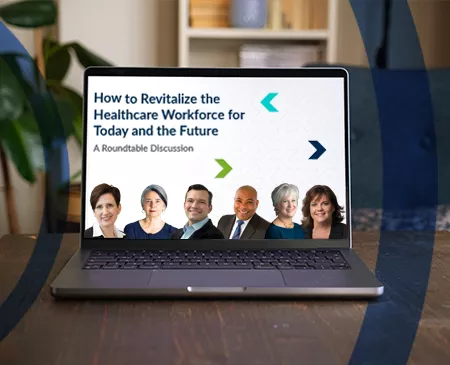The Buzz This Week
Direct care workers are integral to the US healthcare infrastructure and are facing a critical shortage. This vital role’s responsibilities include assisting older adults and people with disabilities or chronic conditions with daily tasks and personal care. They enable many people to live at home, significantly reducing the reliance on more costly institutional services. However, this workforce has been under immense strain due to low wages, poor working conditions, and inadequate benefits.
In response, the US Department of Health and Human Services (HHS), through the Administration for Community Living (ACL), launched several new initiatives aimed at bolstering the direct care workforce. Efforts include technical assistance opportunities to help states strengthen their systems for recruiting, retaining, and developing direct care workers, and a national hub intended to connect states, stakeholders, and communities to best practices and other resources.
One key component of the ACL’s Direct Care Workforce (DCW) Strategies Center’s new offerings is the introduction of two types of technical assistance: intensive and peer-learning collaboratives:
- Intensive technical assistance will facilitate collaboration among state agencies (including Medicaid, aging, disability, labor, and workforce development systems) to improve recruitment, retention, training, and professional development of direct care workers.
- Peer-learning collaboratives bring together representatives from multiple states (such as state agency staff, direct care professionals, and other relevant stakeholders) to foster group learning and information sharing on effective strategies and models for growing the direct care workforce.
Additionally, a new federal bill, the Long-Term Care Workforce Support Act, aims to make a “generational investment” in the senior living and care workforce through substantial new funding and support. The bill proposes support for workers across all segments of the long-term care industry, including assisted living communities, nursing homes, and home care settings.
The bill’s sponsors argue that it will professionalize the sector by improving pathways to enter the care workforce, enhancing wages and benefits, ensuring respectful and safe working environments, and introducing best practices for recruitment and training to promote retention.
The Long-Term Care Workforce Support Act and HHS initiatives reflect a significant commitment to address the immediate shortages. They share a goal to lay a foundation for sustainable improvement in the caregiving sector, enhancing care for older adults and people with disabilities across the country.
Why It Matters
The shortage of direct care workers represents a critical bottleneck in the US healthcare system, with profound implications for older adults and people with disabilities who rely on these services to remain in their communities. This challenge is only intensified by shifting demographics as the number of Americans aged 65 years and older is expected to increase from 17% of the population to 23% by 2050. This growth places unprecedented demands on a workforce that is already grappling with significant gaps between supply and demand. The sector is projected to add more than 1 million new jobs between 2021 and 2031, growing to a total of 4.8 million direct care jobs. However, the overall workforce requirement for this sector is estimated to be 9.3 million. And the estimated total direct care workforce is only 4.8 million.
The impact of this shortage extends beyond the individuals directly receiving care. It has systemic implications across the entire healthcare landscape. For instance, more than half of nursing homes reported that they had to limit new admissions due to staffing shortages. This, in turn, places additional pressure on hospitals and other healthcare facilities. Alarmingly, two-thirds of nursing homes expressed concerns about potential closures due to ongoing workforce challenges.
Given these extensive challenges, addressing the direct care workforce crisis requires more than piecemeal solutions. A strategic, system-wide approach is essential for sustainable improvement.
Federal legislators should collaborate with states to attract and retain workers by creating work environments that support their needs, address inadequate wages, and professionalize the sector. For instance, the median annual pay for direct care workers in 2023 was only $23,688, underscoring the urgent need for improved compensation.
Better benefits and future career pathways could also improve recruitment and retention efforts for direct care workers. Thoughtful implementation of comprehensive programming to bolster the workforce should be combined with sustained federal and state collaboration. Continuous evaluation is also essential to ensure these initiatives effectively meet the complex needs of the diverse direct care workforce and the populations they serve.
At the end of the day, addressing the direct care workforce challenge is not merely about filling job vacancies. It is about enhancing the entire healthcare ecosystem’s capacity to meet the growing demand for community-based care. This challenge requires a comprehensive approach that considers the varied needs of direct care workers, the individuals they support, and the broader healthcare infrastructure. Ongoing efforts to enhance workforce conditions and strategically deploy resources are both critical steps toward securing a stable and competent care workforce for the future.
RELATED LINKS
PHI:
Direct Care Workers in the United States: Key Facts 2023
Health Affairs:
A Multipronged Approach To Alleviating The Direct Care Workforce Shortage
American Health Care Association:
State of the Nursing Home Sector
The Commonwealth Fund:
Addressing the Shortage of Direct Care Workers
Editorial advisor: Roger Ray, MD, Chief Physician Executive.






